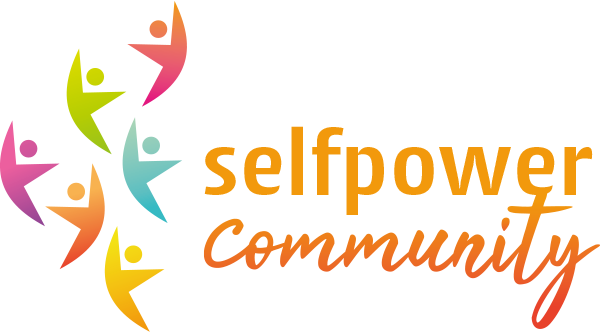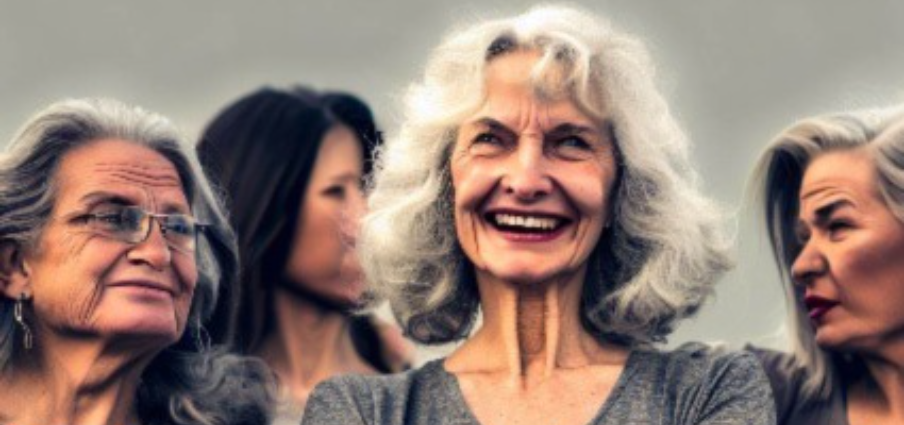66- 08/01/2023 “The Gray Panthers,” the famous movement “against agism and for social justice,” launched in the United States by senior women in the 1970s, has been the subject of numerous scientific publications. The latest one, signed by Olivia Boukydis[1], analyzes their struggle through the lens of critical cosmopolitanism; a philosophy based on the idea that individuals are both members of a local political community and of a humanity facing global challenges. Selfpower Community wanted to highlight this publication for several reasons.
Firstly, to pay tribute to the work accomplished by the association despite its fading presence since the passing of its founder, Maggie Kuhn, in 1995. Secondly, because the fight against relegating older people to second-class citizens remains an urgent issue. Indeed, the economic, health, and social situation of the ‘tribe of elders’ continues to deteriorate. Particularly vulnerable, those aged 60 and above accounted for the highest number of deaths (90%) during the COVID pandemic (2020-2022). Today, their existence is still under threat. Victims of mistreatment in retirement homes and discrimination in a struggling healthcare system, they suffer from ostracism in a society that rejects aging. However, their group has never been more significant: it will represent nearly a quarter of the global population by 2050.
Lastly, from an academic perspective, it is interesting to highlight the proximity of critical cosmopolitanism with collective empowerment; both are part of the same transformative dynamics. Decoding…
“Elderly people are depicted as wrinkled babies, dependent and powerless, unable to contribute to society.” Maggie Kuhn (1977) – (Ciafone, 2021)
Founded in the USA in 1970 by Maggie Kuhn, who was forced to retire at 65, the Gray Panthers fight against agism (discrimination based on age), which deprives both the old and the young of power and influence. This social movement brings together activists who feel devalued in a society that ignores and isolates them. According to the Gray Panthers, agism is a social disease, as insidious and pervasive as racism or sexism: older people are considered burdens the elderly end up internalizing this negative perception. They lose all confidence and self-esteem. They then feel useless, no longer want to communicate with others, and end up isolating themselves (Nelson, 2017). Struggling against their institutionalized devaluation, denouncing their financial difficulties and restricted access to care, Gray Panthers challenge society and authorities. They use moderate and non-violent forms of awareness, such as letters, petitions, and humor. Their goal: to change the way older women are viewed, improve their living conditions, and promote intergenerational collaboration.
Rapid Aging of the World Population Between 2015 and 2050, the proportion of people aged 60 and over in the global population will nearly double, from 12% to 22%. In 2020, the number of people aged 60 and over exceeded that of children under five. By 2050, 80% of older people will live in low- or middle-income countries. Source: WHO, 2022 https://www.who.int/news-room/fact-sheets/detail/ageing-and-health
Intergenerational Collaboration and Activism
Among the latest actions carried out by the Gray Panthers, the webinars called “Tuesdays of Transformation[2].” These online sessions focus on improving care for residents in nursing homes or for disabled people in long-term care facilities. Indeed, during the confinement that occurred during the COVID pandemic, residents were unable to receive visits from their loved ones. But isolation also kills. To prevent this situation from happening again, the Gray Panthers led a national campaign and teamed up with human rights advocates. They have tabled a bill on visiting rights and the person of trust.
The Gray Panthers also support the campaign “Age-Friendly Cities”[3] and advocate for a model of a city that respects the right to live in safety and dignity. Concretely, this involves designing inclusive environments adapted to older people and implementing support systems that promote their autonomy and benefit everyone: accessible transportation, road safety measures, green and public spaces, climate change adaptation, community support, and access to healthcare services. These demands resonate with Sustainable Development Goal (SDG) 11, “Make cities and human settlements inclusive, safe, resilient, and sustainable.”
The Gray Panthers also organize self-defense initiation seminars[4]. Recently they issued an alert denouncing the inhumanity of Supreme Court decisions regarding affirmative action, LGBTQ+ rights, and student loans[5].
For the past 30 years, the Gray Panthers have asserted themselves as a coalition of age and youth. Their advocacy goes beyond defending their own interests; they campaign for a more humane world, respectful of differences. Through their enthusiasm and creativity, they demonstrate the combined benefits of intergenerational collaboration and activism. Their model can be seen as a promising path for anyone wanting to fight against age-based segregation and add enthusiasm and determination to traditional approaches to aging well.
Salutary Civic Engagement Also on a Personal Level The WHO has established a correlation between activism and healthy aging; activism has a boosting effect on functional capacity and well-being at an advanced age (World Health Organization, 2020; Hutchinson & Wexler, 2007; Narushima, 2004).
A Theme Still Relevant In France where several scandals related to older age have struck public opinion:
The elderly, Covid’s first victims (2020): a documentary directed by Xavier Deleu and Julie Pichot establishes that “the elderly were sacrificed by being taken care of too late by overworked emergency services. When they weren’t outright refused admission to hospital intensive care, as they were considered a low priority.”
Source: Le Monde, November 18, 2020 – https://www.lemonde.fr/culture/article/2020/11/18/covid-19-que-se-passe-t-il-vraiment-dans-les-ehpad-un-scandale-de-sante-publique_6060263_3246.html
The Orpea scandal (2022): In the book “Les Fossoyeurs” (The Gravediggers), journalist Victor Castanet denounces mistreatment of older people and and embezzlement within the establishments of the leading retirement home private group.
Last june, Professor Armelle Gentric, Head of Geriatric Services and Professor of Geriatrics at the Faculty of Medicine (CHU de Brest), and Cyril Hazif-Thomas, Head of the Intersectoral Psychiatry Service for the Elderly and Director of Ereb[6], issued an alert against “discrimination against the oldest patients in the healthcare world.” They denounce attacks against the elderly, treated as bed blockers or ignored in prevention. According to them, ageism is wreaking havoc in the field of healthcare…
Analysis
Critical cosmopolitanism and collective citizen empowerment, closely related concepts that can serve as a theoretical framework for the Gray Panthers movement.
According to the theory developed by Holton (2002), cosmopolitanism is a thought stemming from universal models that aim for global conviviality, world citizenship, and human well-being. Critical cosmopolitanism revisits this theory, taking into account local and cultural particularities. Understanding dissenting points of view involves mechanisms of deliberative communication, dialogical exchange, critical analysis, interaction, and engagement with others. These lead to mutual adaptation of oneself and society (Djurdjevic & Roca, 2016; Hulme, 2019). In other words, critical cosmopolitanism questions power structures and dominant ideologies that, despite their sometimes positive intentions, perpetuate oppressions, inequalities, and marginalizations. To avoid the pitfalls of overly normative theories, philosophers encourage plurality, respect for differences, and inclusive perspectives, conducive to the flourishing of individuals and communities within a more just and equitable global order. The Gray Panthers adhere to this vision when they fight against societal fractures between young and old, when they emphasize intergenerational interweaving, and advocate for generations to communicate, interact, and share social responsibility (Delanty, 2009; Whittington, 2010).
Collective citizen empowerment characterizes the process of awareness, resistance, interaction, action, and reform deployed by members of a community. Driven by the desire to oppose “the domination of the State, the market, the system” (Friedmann, 1992), the group asserts its original thinking and singularity, which express its collective identity. Its members unite to collectively address injustices and overcome obstacles with the aim of making social norms more inclusive and favorable (Perkins et al., 2002). The empowerment process begins with individual awareness of inequalities and a determination to no longer endure them. It continues by bringing together people facing the same difficulties and the sharing of their experiences. Plural observations of a overwhelming reality lead to a critical analysis of power relationships and result in the design of corrective solutions and a questioning of the deep-rooted causes of injustices.
The societal transformations targeted by critical cosmopolitanism or collective citizen empowerment are of the same nature; they both involve personal confrontation with a dysfunction that clashes with an ideal of justice and inclusion. The transformation processes are also closely related: cooperation among individuals affected by the same social problem, development of countermeasures, analysis of power plays, and proposals for reforms of a system that discriminates against a part of its population. The approach is based on individual commitment, exchange, and cooperation around concrete projects. The operational phase involves identifying opportunities, setting up action groups, and advocating for fundamental reforms. And this is exactly how the Gray Panthers describe their process of emancipation and affirmation..
The collaborative and societal levels often give rise to alliances with other movements, as was the case for the Grey Panthers with youth or human rights groups.
Marie-Georges Fayn
[1] Boukydis, O. (2023). The Gray Panther Movement as a Model for Intergenerational Approaches and Late-Life Activism: A Critical Cosmopolitan Perspective. Journal of Intergenerational Relationships, 1-18. To carry out her research, Olivia Boukydis studied various documents: archives, video footage, newspaper articles and related press documents.
[2] https://www.graypanthersnyc.org/post/encore-presentation-assuring-human-rights-for-older-persons-in-long-term-care-facilities – https://www.graypanthersnyc.org/blog
[3] https://www.graypanthersnyc.org/post/join-us-july-13-2023-age-friendly-cities-and-sdg-11-a-template-for-everyone
[4] https://www.graypanthersnyc.org/post/kick-the-crap-out-of-ageism-introductory-self-protection-seminar-for-seniors-april-15
[5] https://www.graypanthersnyc.org/post/the-inhumanity-of-the-supreme-court-s-decisions-on-affirmative-action-lgbtq-rights-student-loans
[6] https://sfgg.org/espace-presse/revue-de-presse/ces-deux-medecins-alertent-contre-les-discriminations-envers-les-patients-les-plus-ages-dans-le-monde-de-la-sante/
Bibliography
Castanet, V. (2022). Les fossoyeurs: Révélations sur le système qui maltraite nos aînés. Fayard.
Ciafone, A. (2021). The Gray Panthers are watching: gray women’s media activism in the 1970s and 80s. Feminist Media Studies, 21(2), 265-280.
Delanty, G., & He, B. (2018). Cosmopolitan perspectives on European and Asian transnationalism. International Sociology, 23(3), 323–344. https://doi.org/10.1177/ 0268580908088893
Djurdjevic, M., & Roca, J. (2016). Mixed couples and critical cosmopolitanism: Experiences of cross-border love. Journal of Intercultural Studies, 37(4), 390–405. https://doi.org/10.1080/ 07256868.2016.1190695
Friedmann, J. (1992). Empowerment: The politics of alternative development. John Wiley & Sons.
Holton, R. J. (2002). Cosmopolitanism or cosmopolitanisms? the universal races congress of 911. Global Networks, 2(2), 153–170. https://doi.org/10.1111/1471-0374.00033
Hulme, A. (2019). The ‘fools cap’ map of the world: Exploring critical cosmopolitanism through cartographic critique. Globalizations, 16(5), 593–605. https://doi.org/10.1080/ 14747731.2018.1543574
Hutchinson, S. L., & Wexler, B. (2007). Is “raging” good for health?: Older women’s participation in the raging grannies. Health Care for Women International, 28(1), 88–118. https://doi. org/10.1080/07399330601003515
Perkins, D. D., Hughey, J., & Speer, P. W. (2002). Community psychology perspectives on social capital theory and community development practice. Community Development, 33(1), 33-52.





En postant un commentaire sur www.selfpower-community, vous acceptez les règles de l’espace réaction et reconnaissez à www.selfpower-community la capacité de ne pas publier certaines contributions sans avoir à motiver cette décision.
prendre connaissance des règles